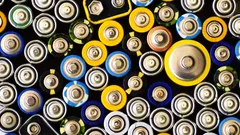150
6
4 minutes
Suggested Articles

Homeowners embrace MIT’s off-grid cooling to slash summer energy bills
MIT scientists reveal a sustainable, off-grid cooling technology that can help the U.S. beat record summer heat without traditional air conditioning. Explore its potential impact on energy savings, climate, and future innovations.

How chasing infinite energy forever changed nature and the American West
AI & Everyday Tech

Old batteries become clean fuel in groundbreaking energy breakthrough
AI & Everyday Tech

DIY solar routers let you slash energy bills and control your power
Tech How-To Guides

Summer adventurers embrace wearable air conditioners for instant cool comfort
Gadgets & Reviews

Travelers and campers embrace portable backpack laundry tech for freedom and clean clothes anywhere
Gadgets & Reviews

The magic bag keeping fruit fresh and saving money in American homes
AI & Everyday Tech

Tech leaders embrace waste-to-carbon solutions as Microsoft bets big on green AI
AI & Everyday Tech

Induction Cooktops Are Revolutionizing American Kitchens With Smart Cooking
Gadgets & Reviews

Physicists confirm long-awaited quantum theory after 65 years of pursuit
Gadgets & Reviews

Playing video games together strengthens relationships and sparks real connection
AI & Everyday Tech

US crypto pioneers transform bold risk into life-changing fortunes
AI & Everyday Tech

Sleep experts champion a smart anti-snoring belt for restful nights and healthier mornings
Gadgets & Reviews

Drivers use Google Maps and Waze to avoid fines but risk safety trade-offs
AI & Everyday Tech

App lovers seize this week’s best free premium downloads before time runs out
Smartphones & Apps

GeForce RTX 4000 owners unleash ultra-smooth gaming with NVIDIA’s AI-powered Smooth Motion
AI & Everyday Tech

Parents and students unlock affordable learning as TVs become computers in every home
AI & Everyday Tech
 W3 CodeCraft
W3 CodeCraft

Comments